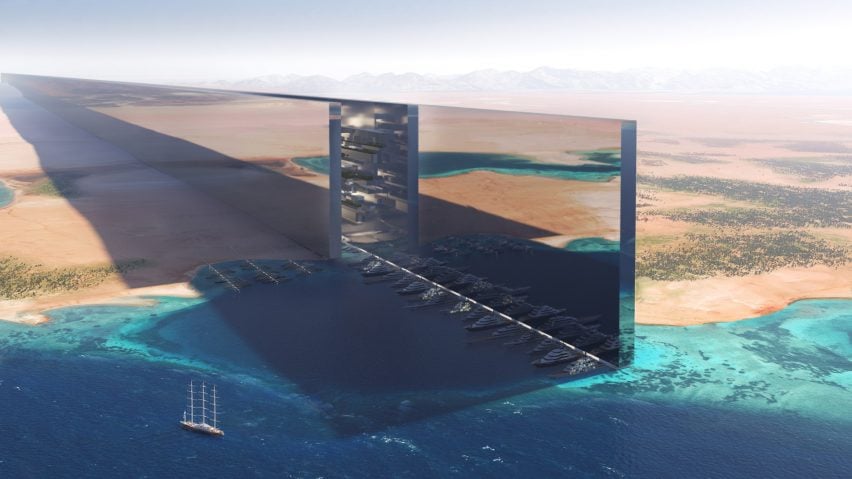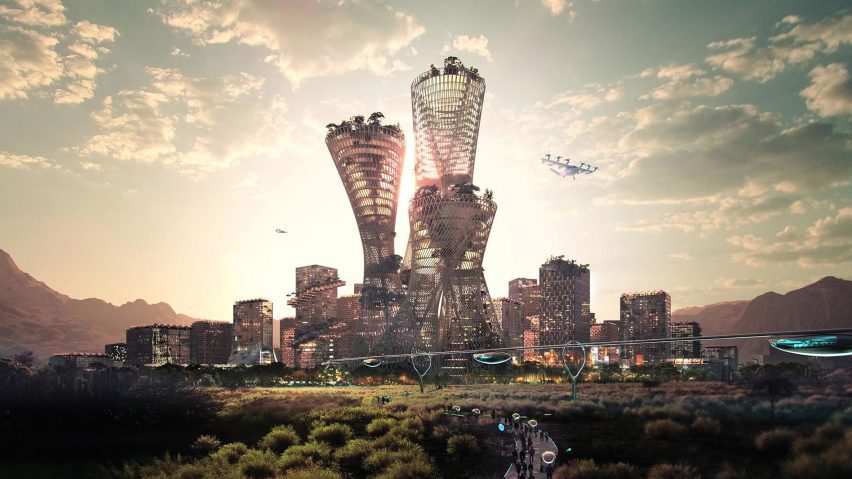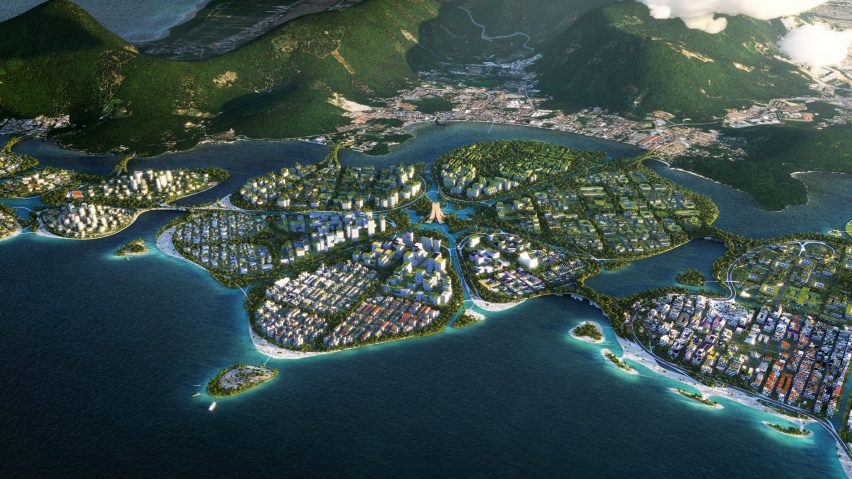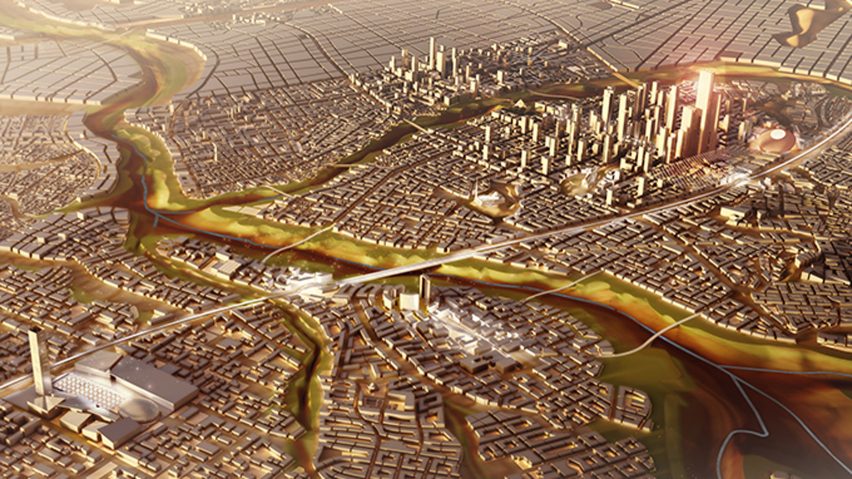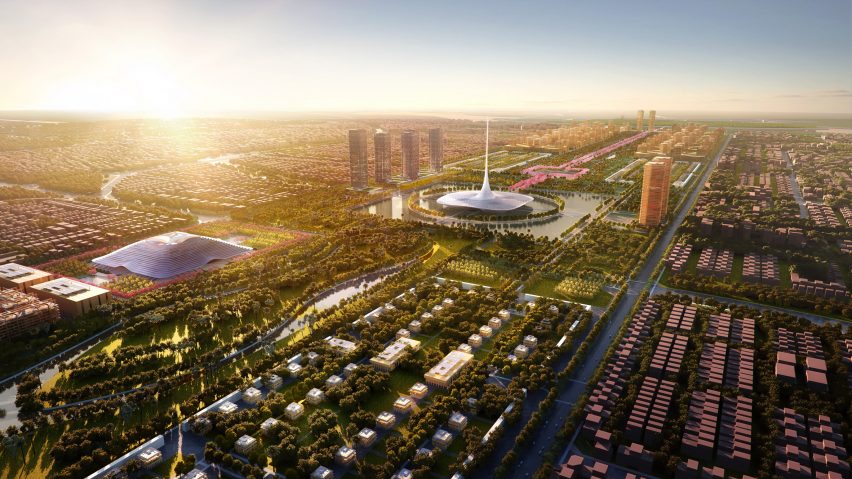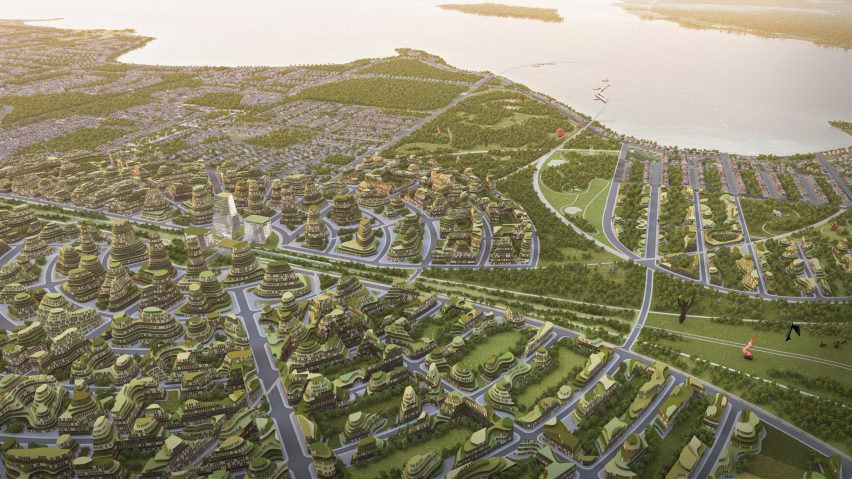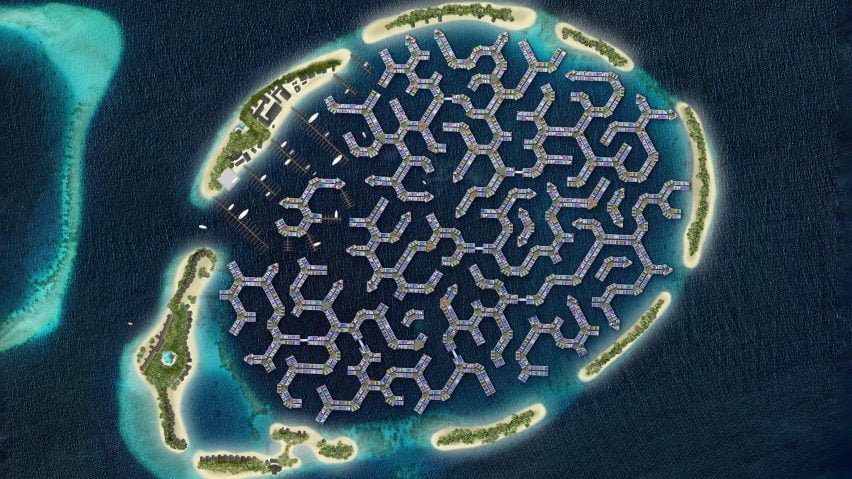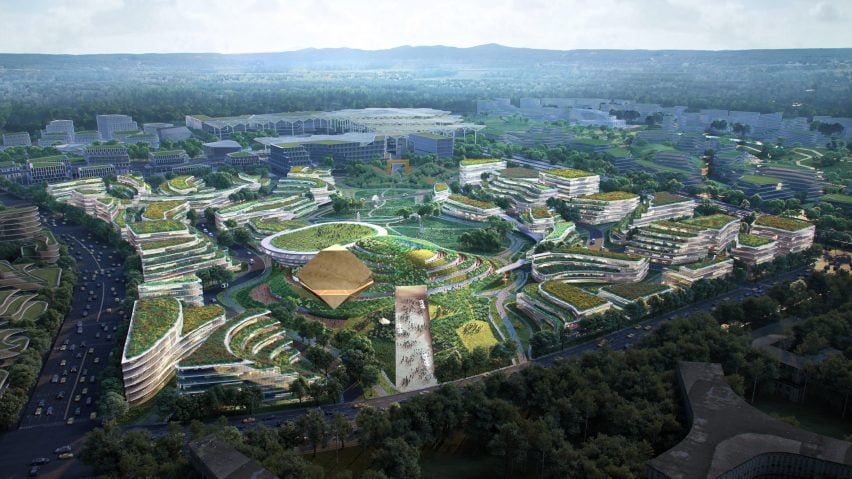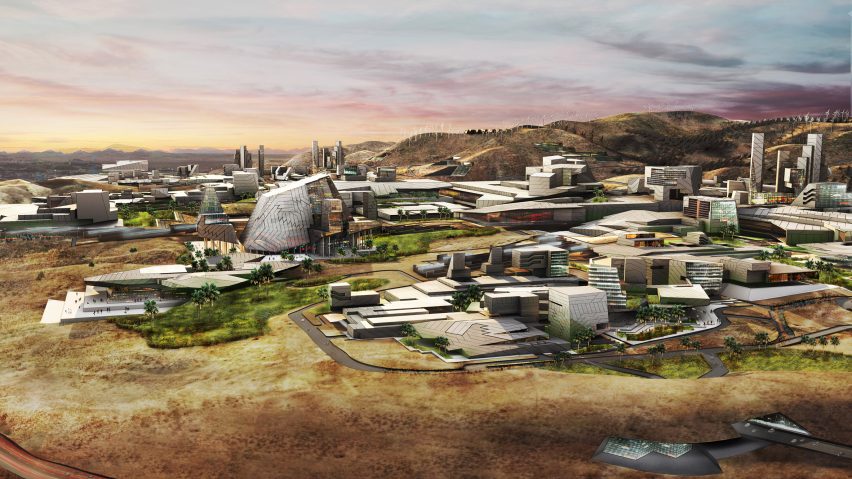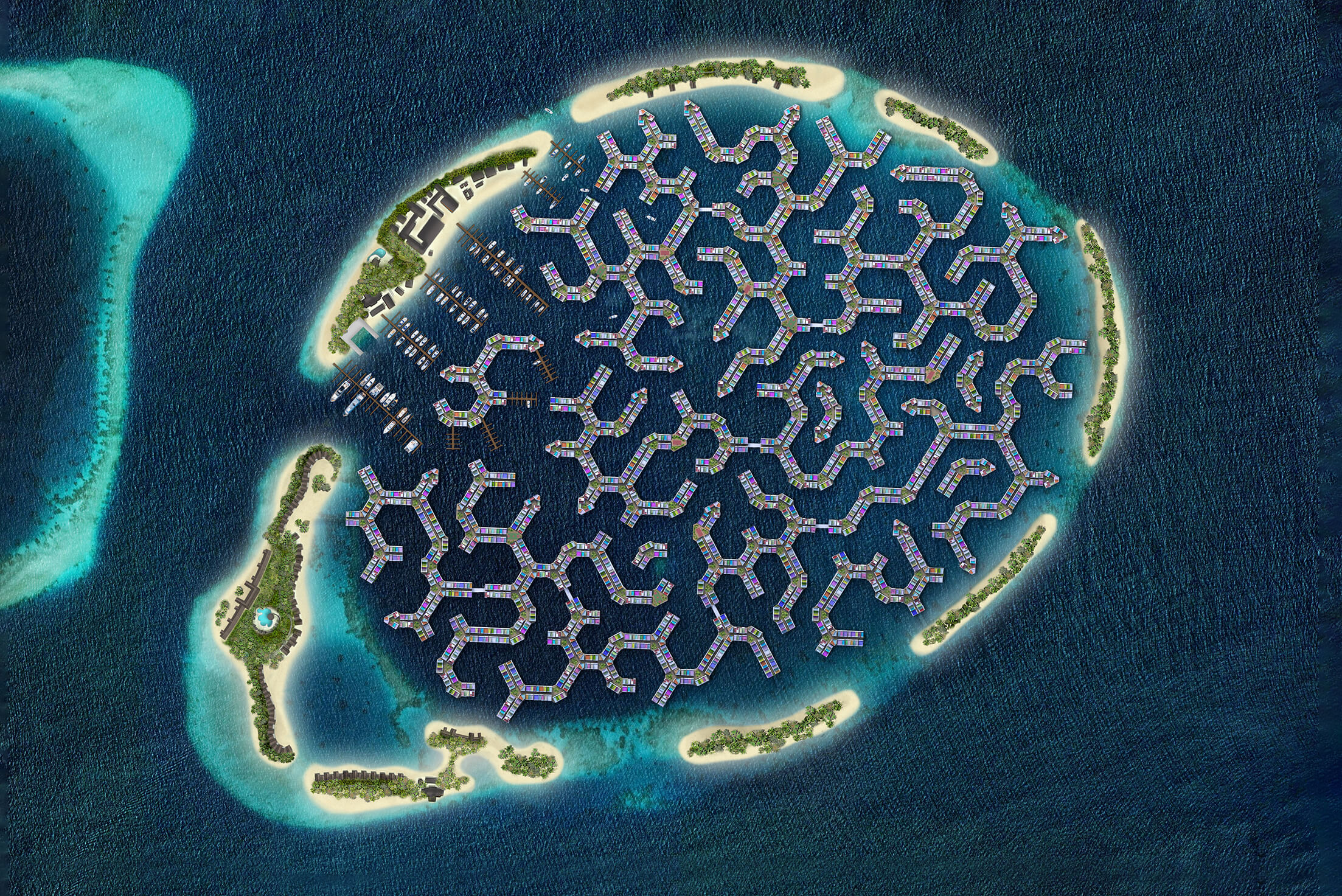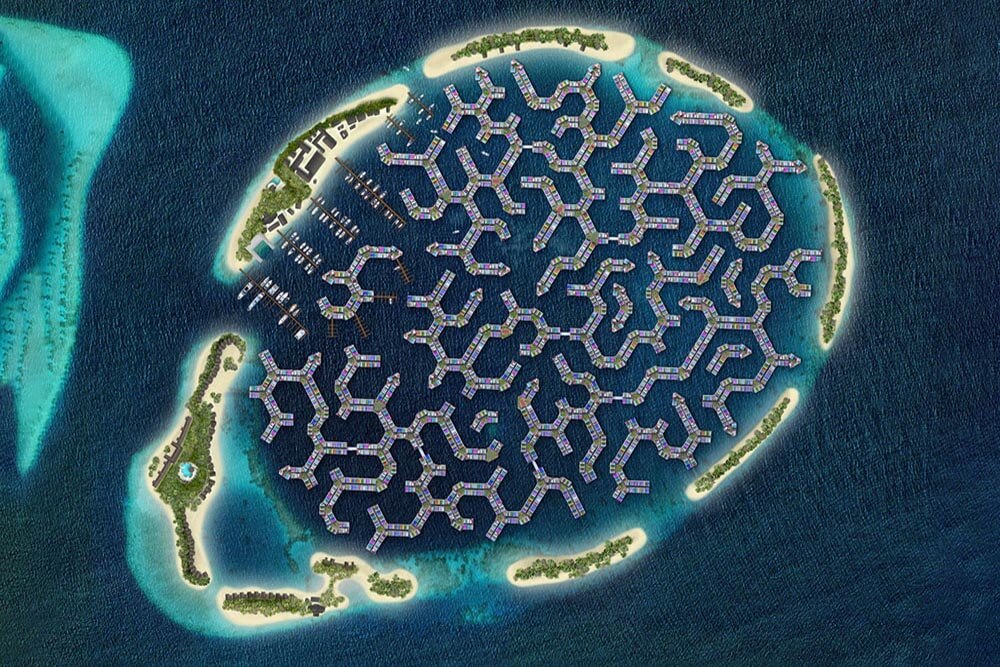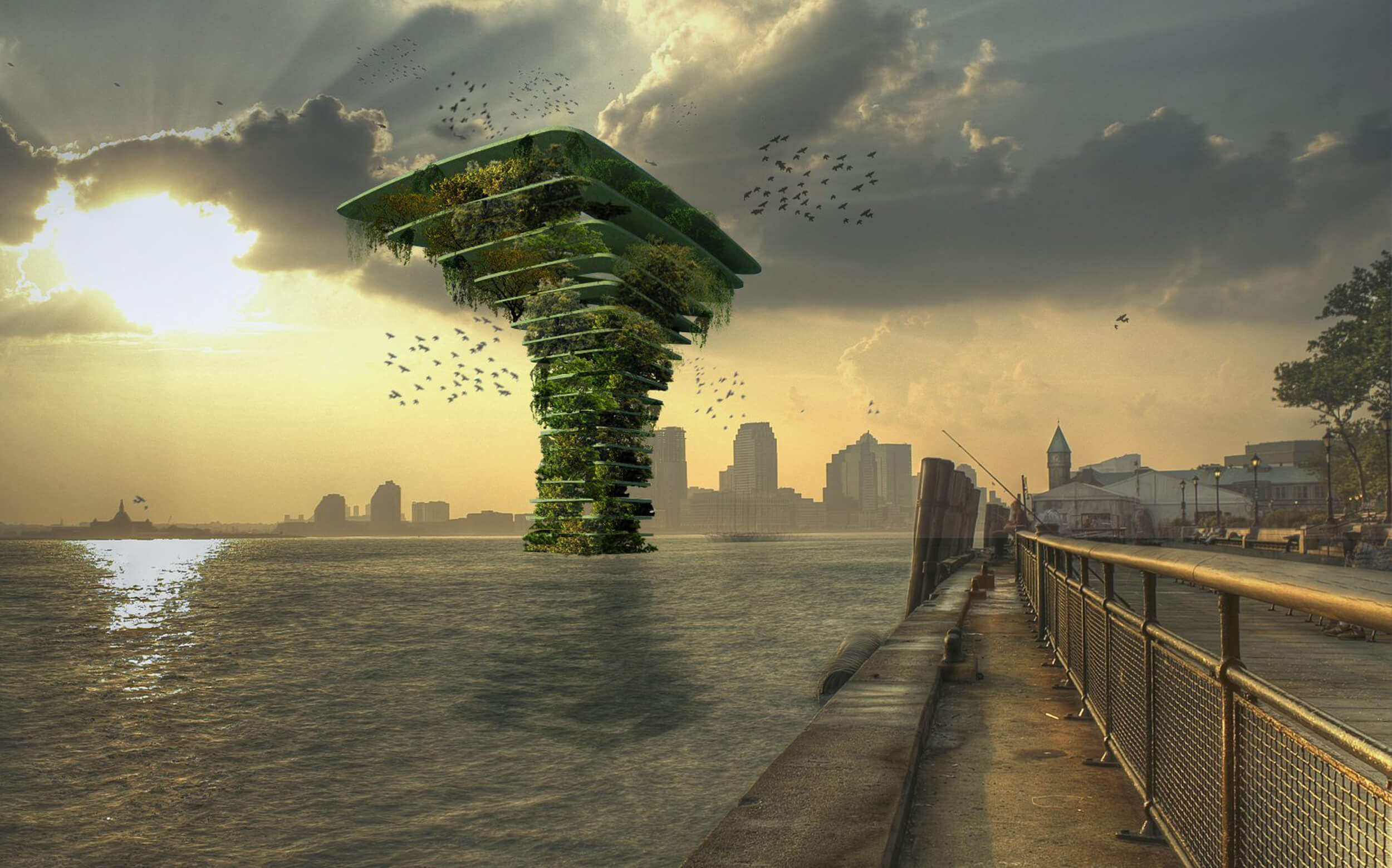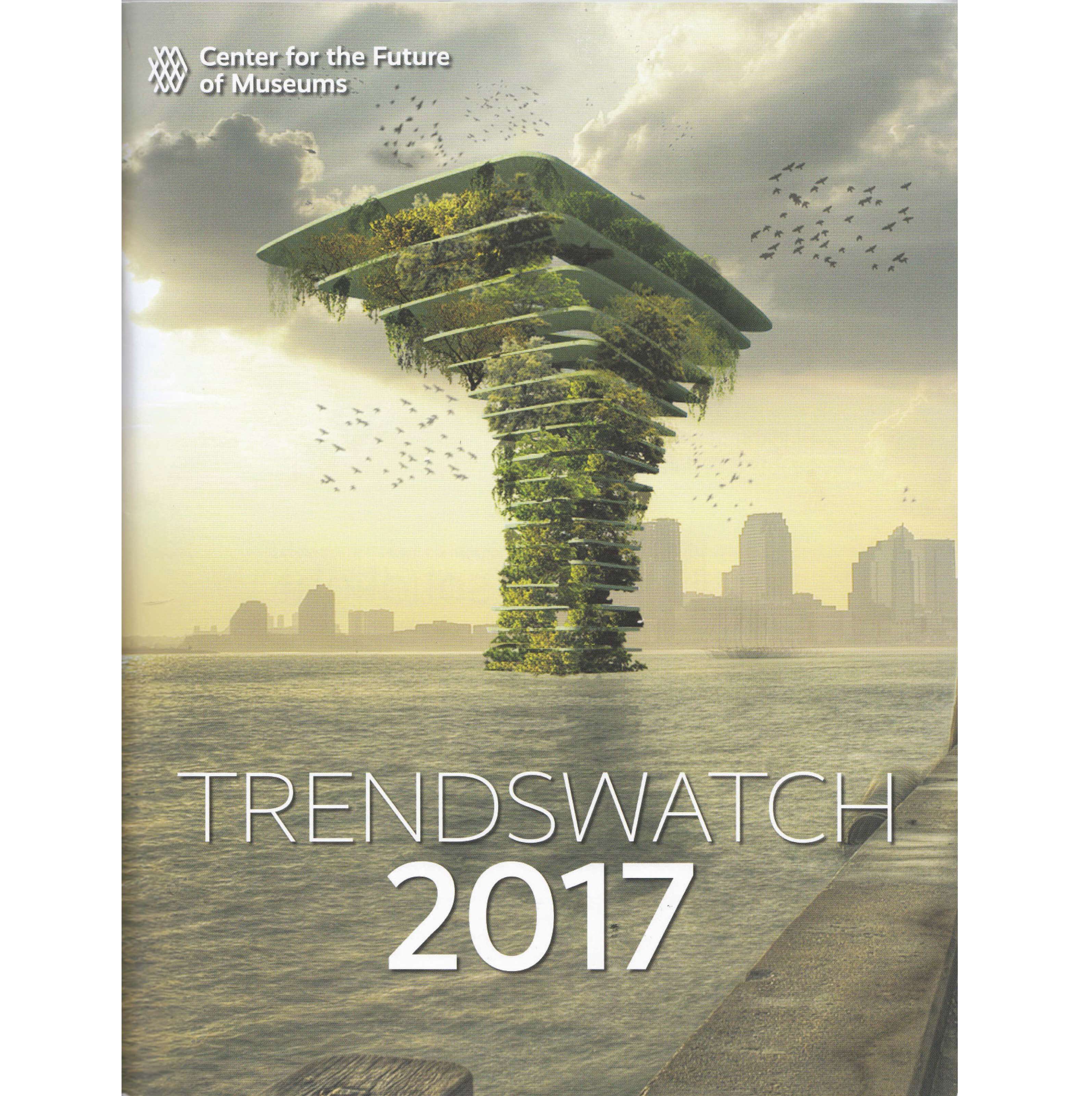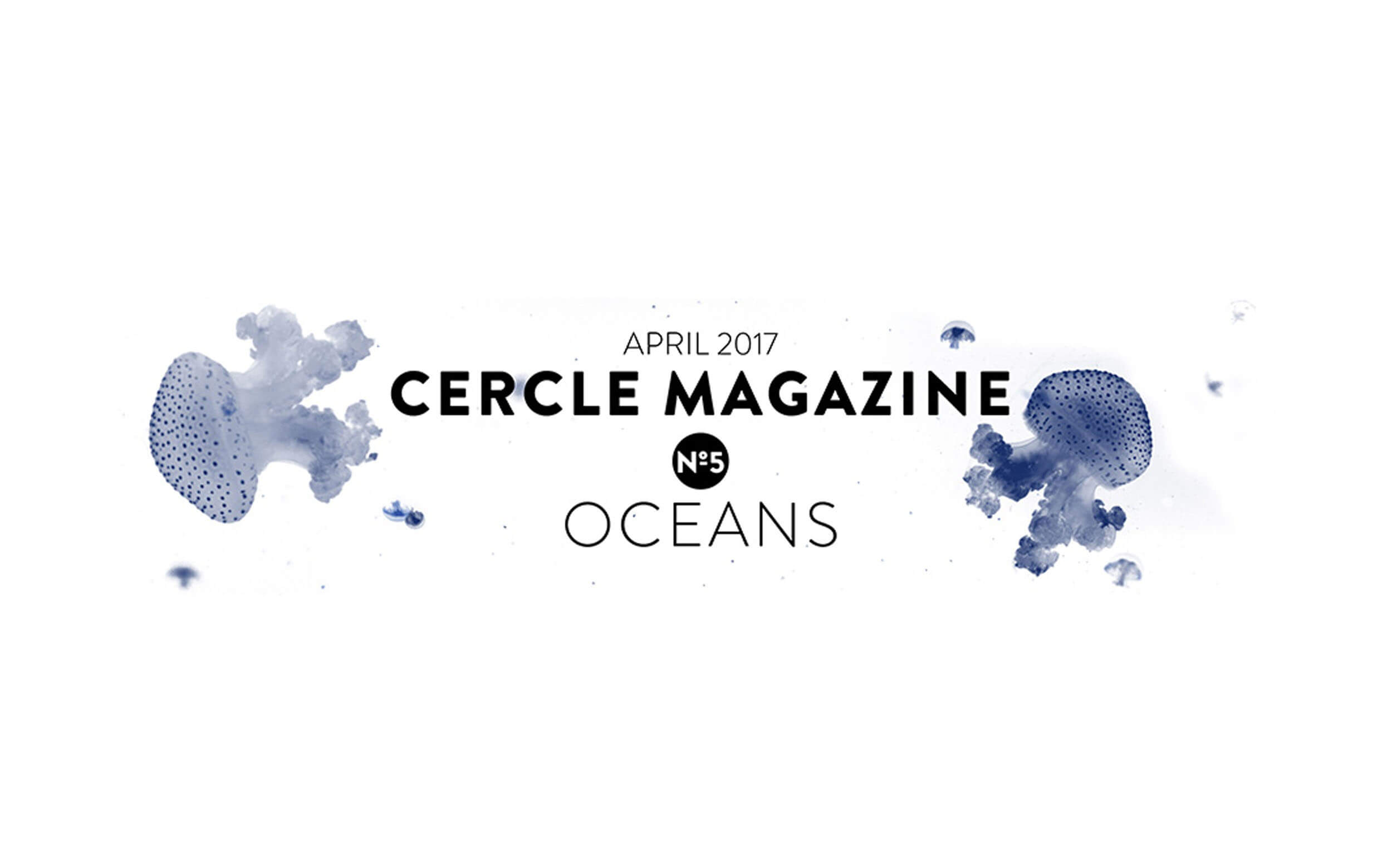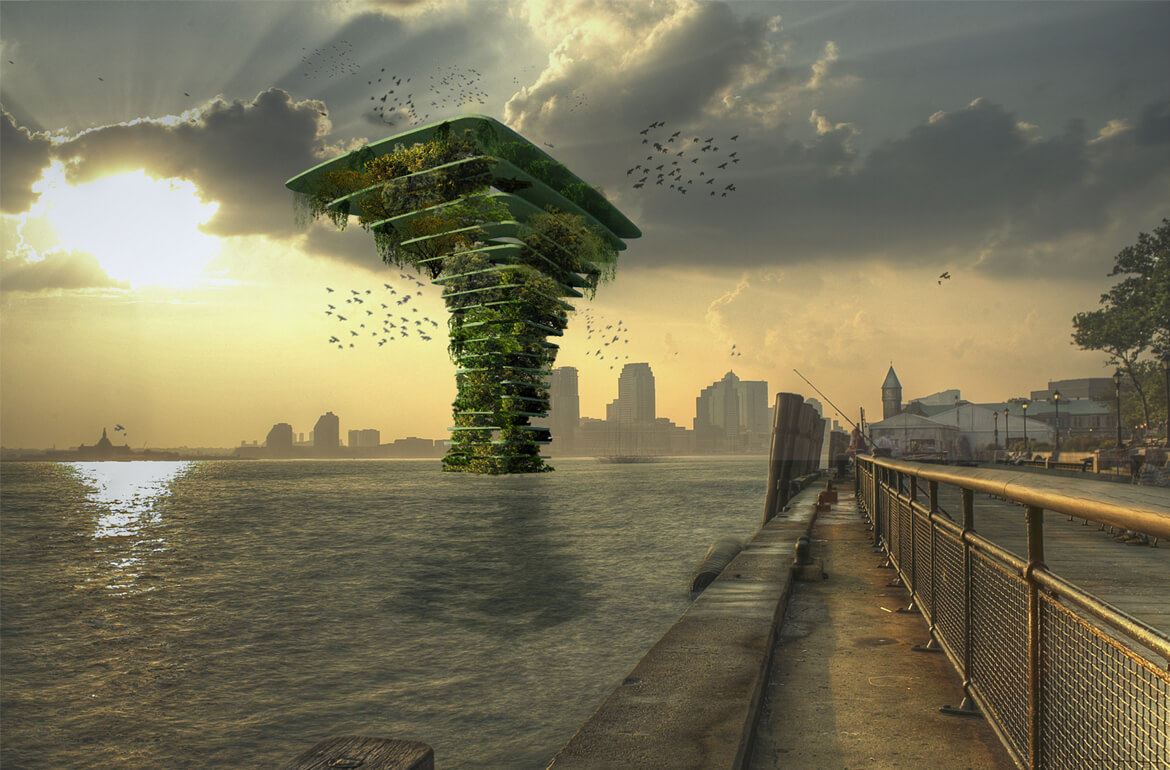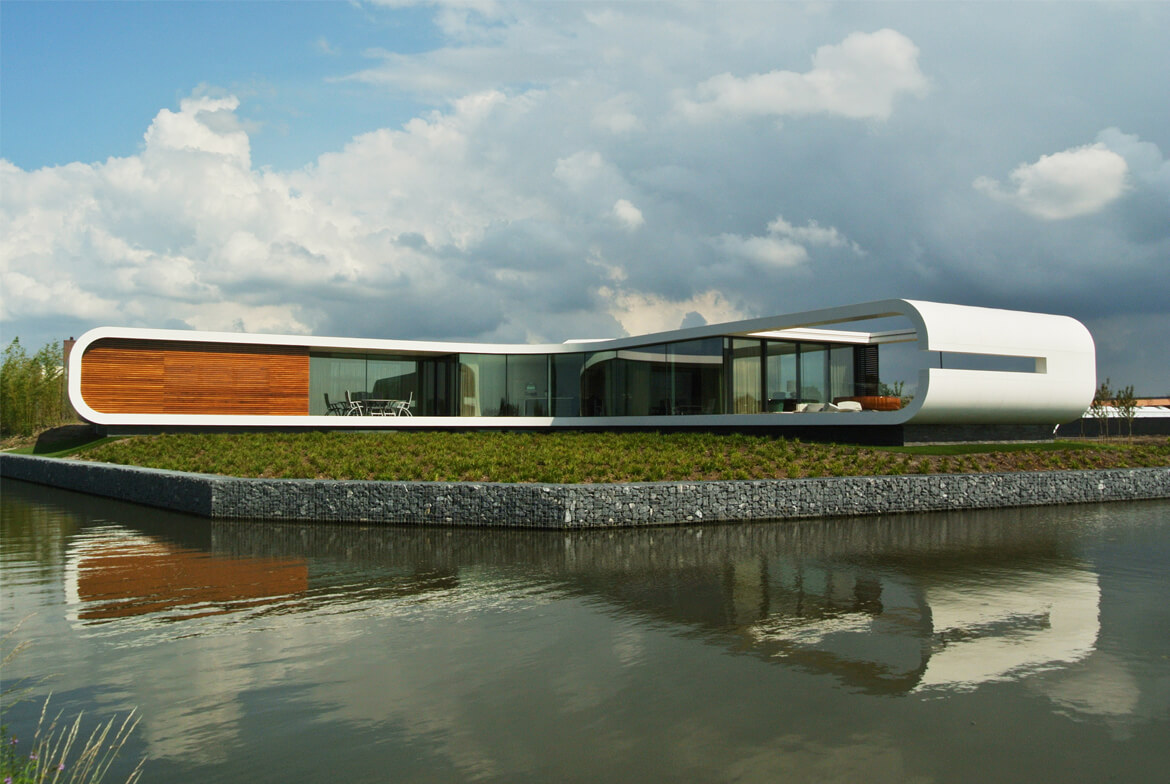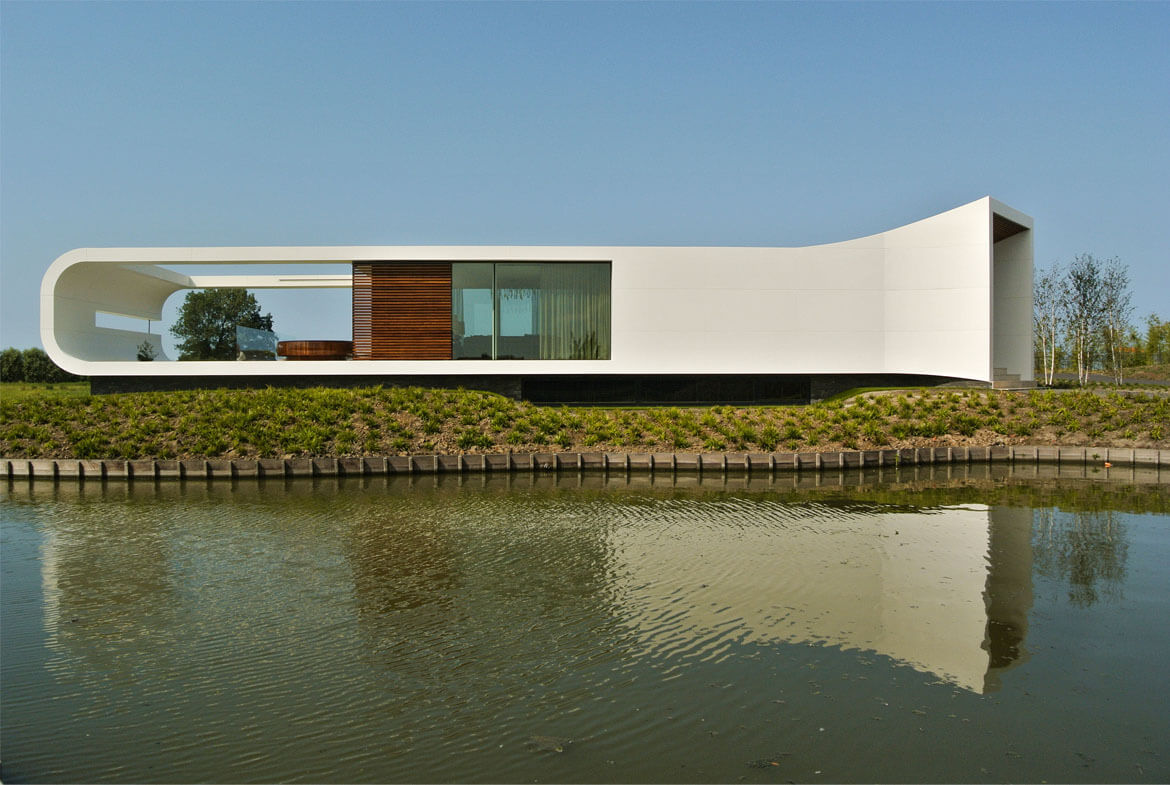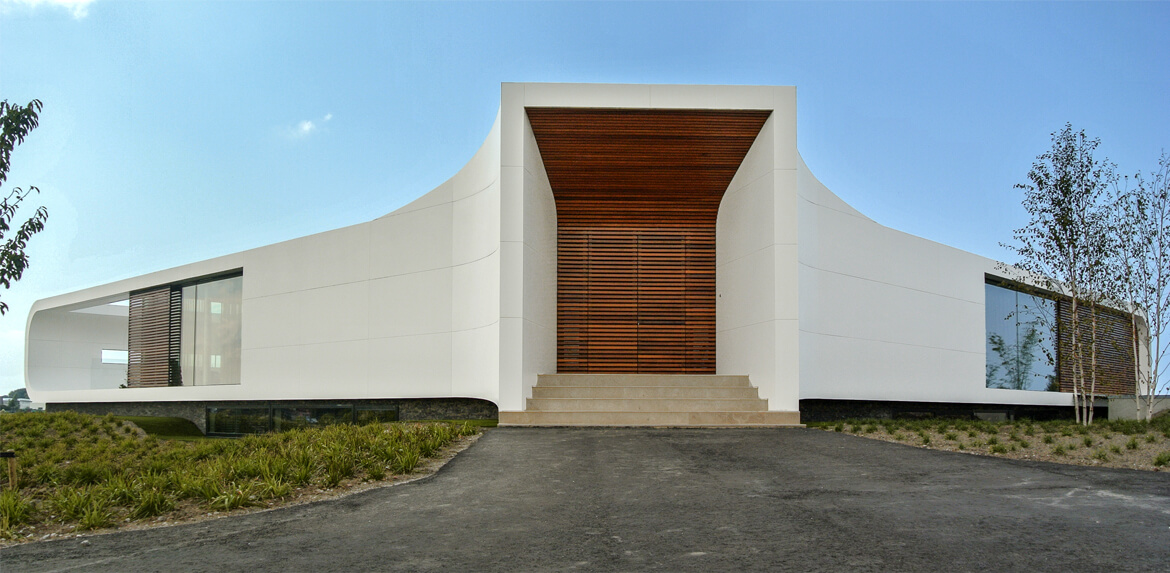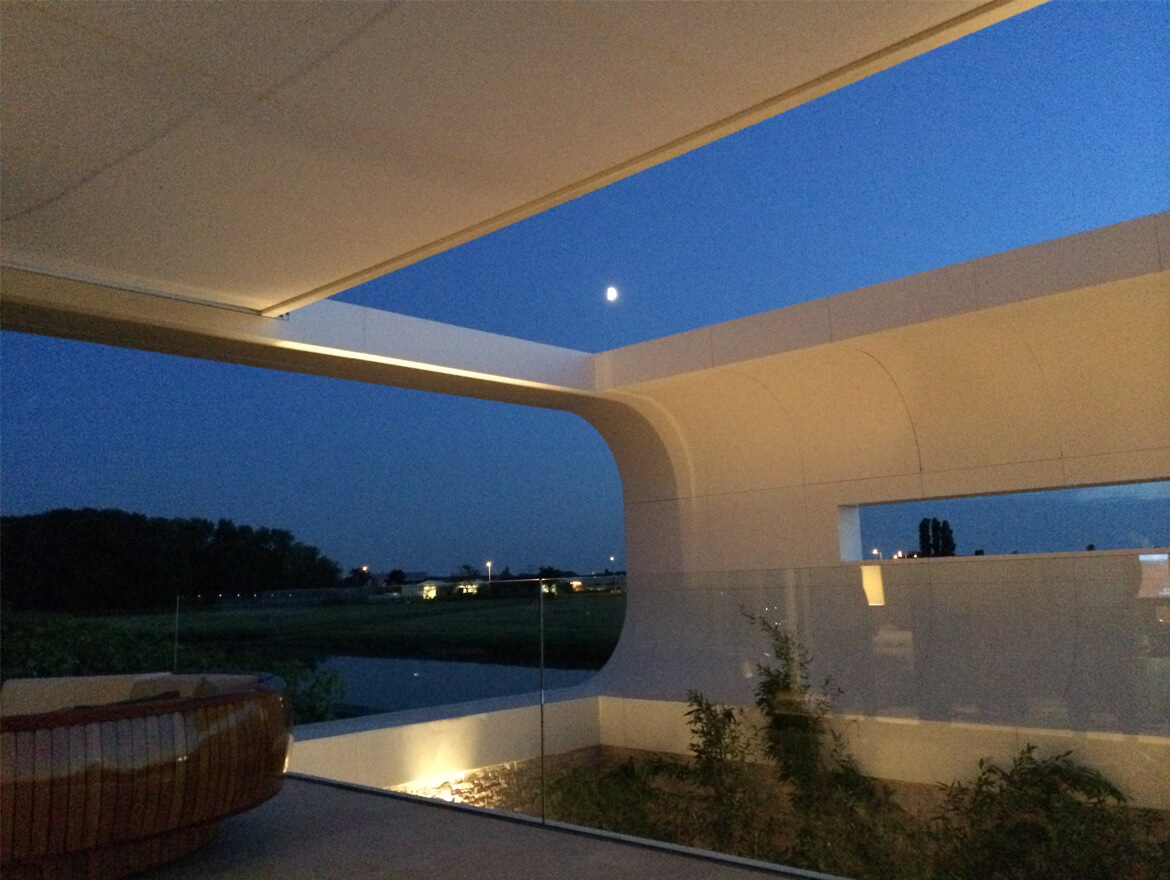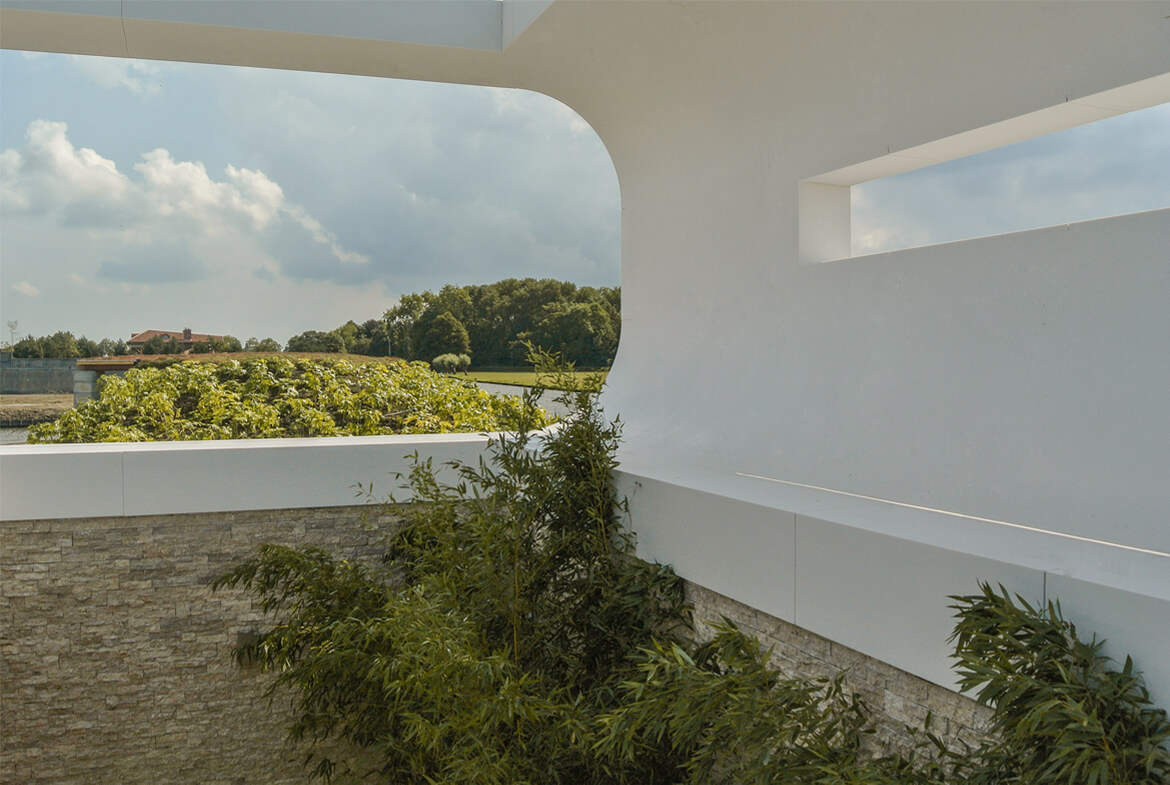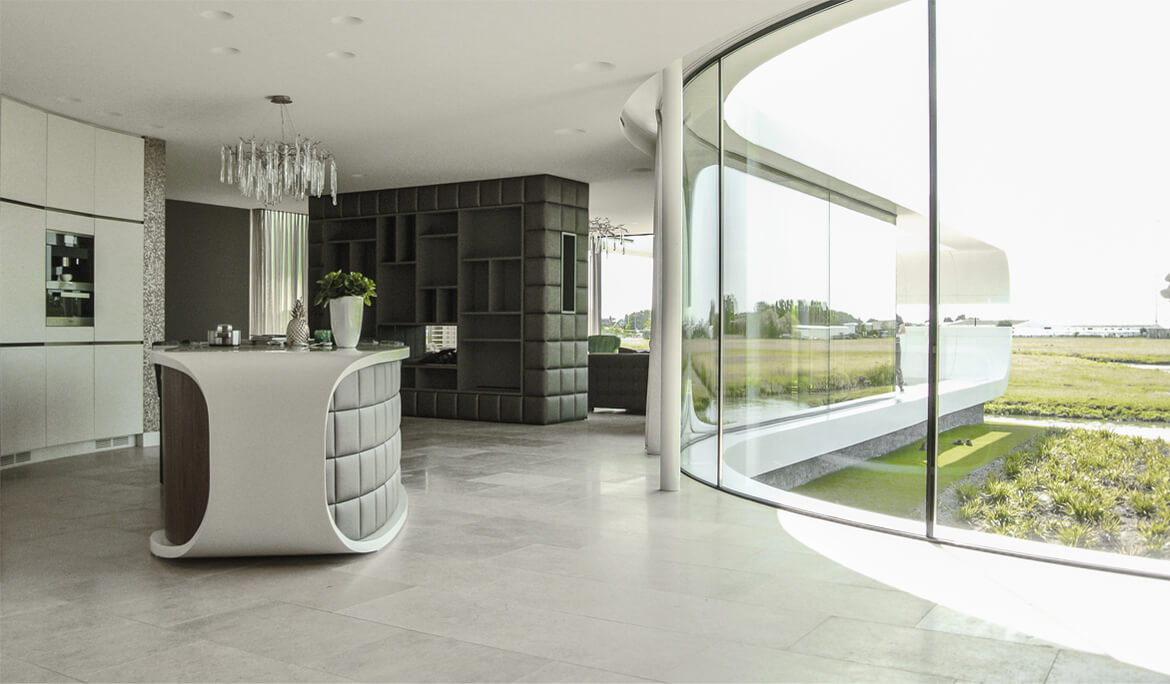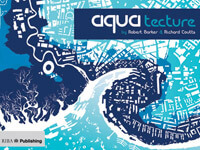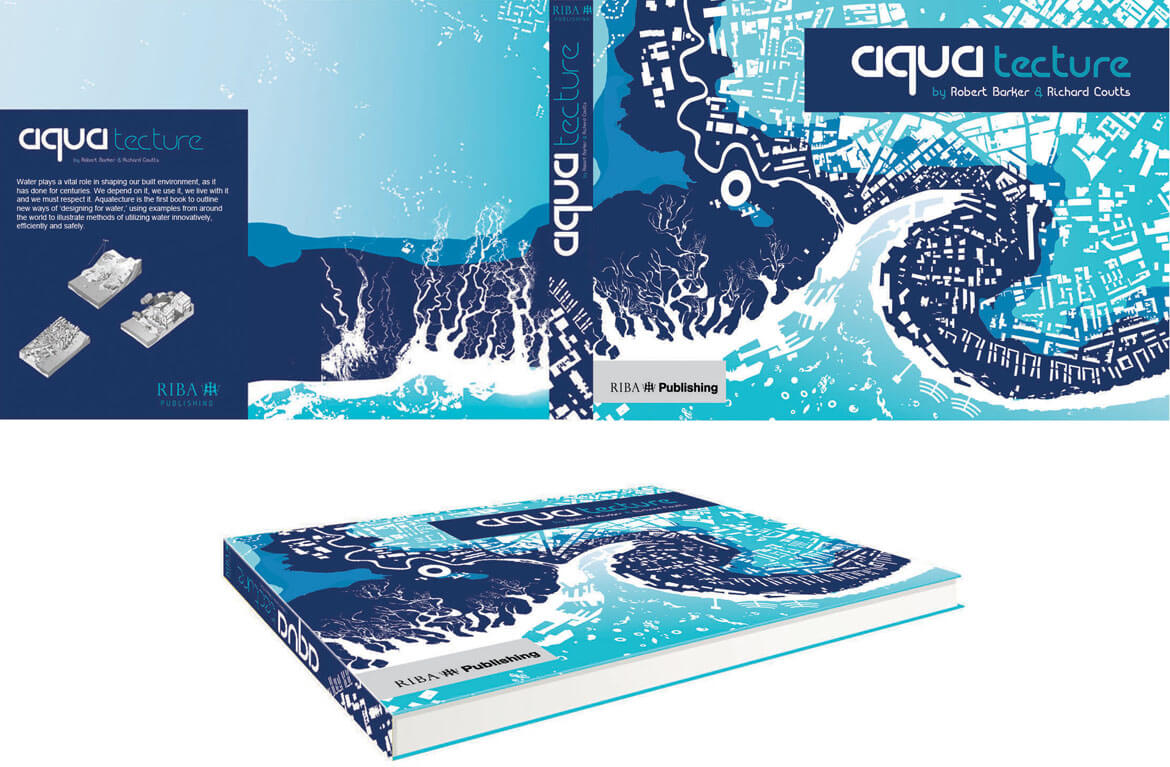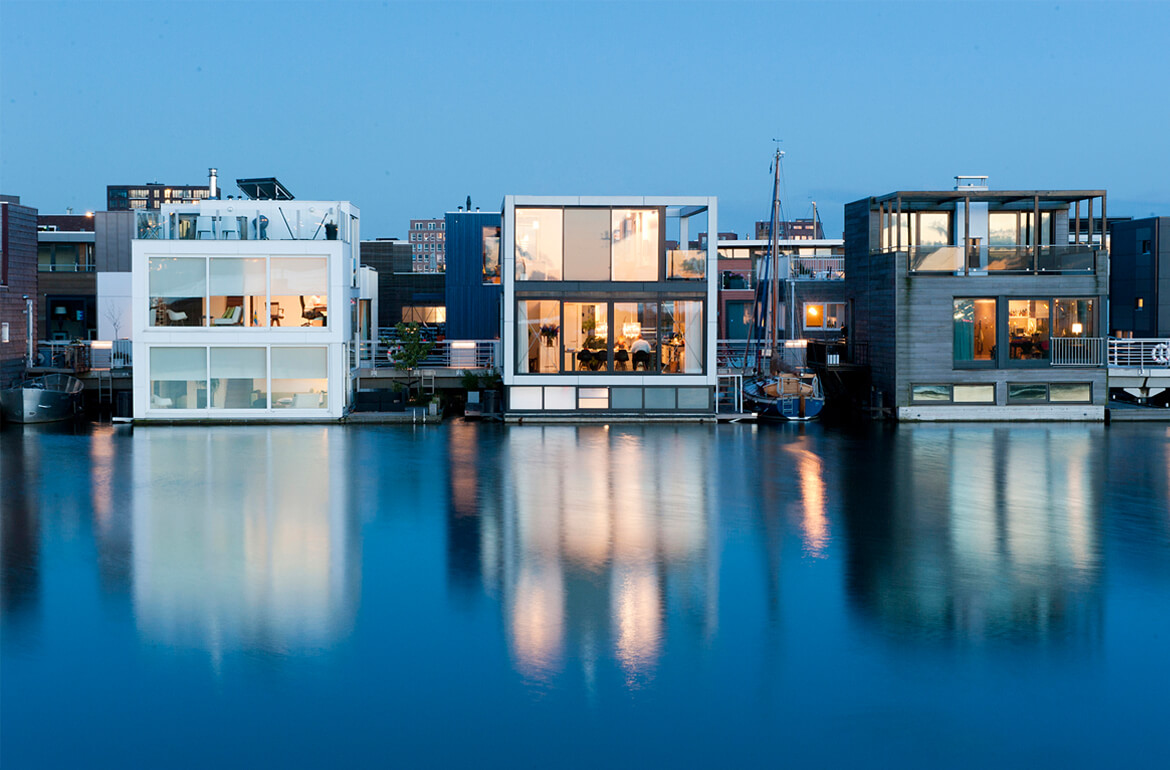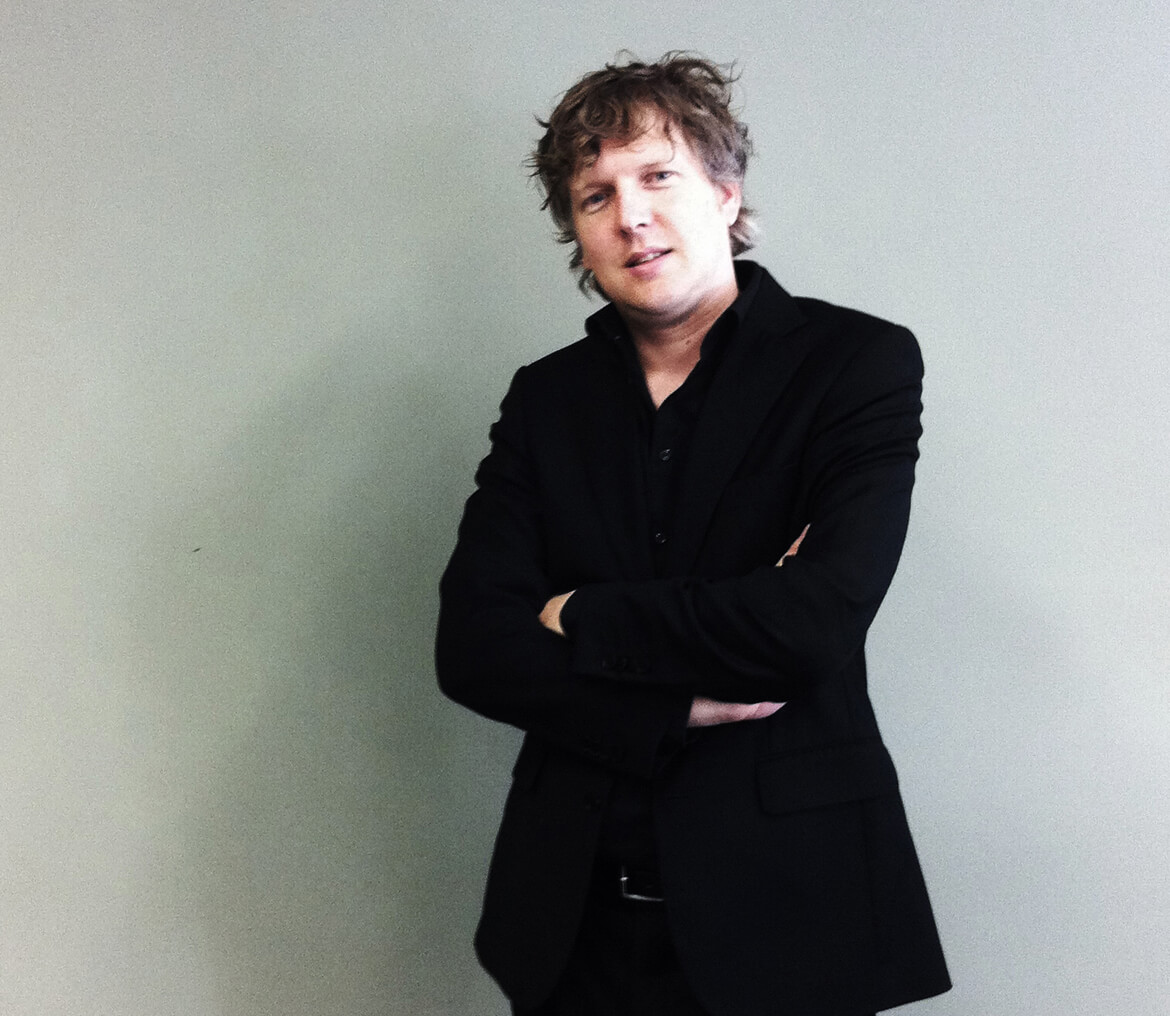As the world changes, so must our cities.
With world’s population continuing to increase and climate change drastically affecting our environment, many metropolises are struggling to grow, develop and even support citizens within current and traditional urban designs.
Governments, entrepreneurs and technology companies are employing some of the world’s leading architects and designers to rethink the idea of cities, how people can interact and how to live within them.
From reclaimed land, groundbreaking skyscrapers in the desert and cities rising in the metaverse, here are 12 incredible futuristic cities redefining the urban spaces we live in.
The Mirror Line, Saudi Arabia
Designers: Morphosis Architects
Location: Saudi Arabia
The $500 billion Neom project in Saudi Arabia is set to be home to a record-setting 170-kilometre-long skyscraper called the Mirror Line.
It will be the world’s largest structure, comprising of two buildings up to 490 metres tall, running parallel to each other. The structures will be connected by walkways and a high-speed transport system, which will connect one end of the city to the other in 20 minutes.
Designed by the US-based Morphosis Architects, The Mirror Line promises to be walkable city, with no cars and zero carbon emissions.
BiodiverCity, Malaysia
:quality(70)/cloudfront-eu-central-1.images.arcpublishing.com/thenational/SUUS3GUP7RGN7HLZQWHC4SBRCM.jpg)
Designers: Bjarke Ingels Group
Location: Penang Island, Malaysia
BiodiverCity is a planned sustainable city made of three artificial islands built off the shore of Penang Island in Malaysia.
A city where people and nature co-exist, each of BiodiverCity’s lily pad-shaped islands will be home to between 15,000 and 18,000 residents. Structures in the city will be built using natural materials such as timber, bamboo and concrete created from recycled materials.
The city is also planned to be a global travel destination with 4.6km of public beaches and 600 acres of parks along with a 25km waterfront. BiodiverCity will also be a car-free environment, where pedestrians can use the planned autonomous water, air and land public transportation network.
Chengdu Future City, China
:quality(70)/cloudfront-eu-central-1.images.arcpublishing.com/thenational/XEZURS55LNALTHMKE2R7PT2ZLA.jpg)
Designers: OMA
Location: China
China’s planned Chengdu Future City is challenging conventions of urban planning by proposing a master plan not based on traditional, car-oriented road networks.
The six distinct zones of the city will be connected though a smart mobility network using automated vehicles. The zones will also be pedestrian-friendly and within a 10-minute walk of each other.
The 4.6-square-kilometre site also includes an international education park where buildings, including a university, will have landscaped terraces, designed to be an extension of the natural formed landscape.
Akon City, Senegal
:quality(70)/cloudfront-eu-central-1.images.arcpublishing.com/thenational/SAEC42OEGFCSFGC7II35ZYJQAE.jpg)
Designers: Bakri & Associates Development Consultants
Location: Senegal
Akon City is a planned 2,000-acre futuristic city that will be located along the Atlantic coast, in south of Dakar, Senegal.
Conceived and launched by singer and entrepreneur Akon, the smart city will be eco-friendly and powered by renewable energy. Described by Akon as a “real-life Wakanda”, a reference to the film Black Panther that inspired him, Akon City is set to have large skyscrapers, shopping malls, parks, universities, a stadium and a technology hub.
Akon City’s goal is to stimulate the local economy and create jobs while using the latest technologies of blockchain and cryptocurrency.
Telosa, the US
:quality(70)/cloudfront-eu-central-1.images.arcpublishing.com/thenational/5UWYJNB5LJFBPLSGIZ2V72FLOE.jpg)
Designers: Bjarke Ingels
Location: The US
Announced in September 2021, Telosa is a proposed city conceived by billionaire Marc Lore, to be built somewhere in the US western desert.
With a planned population of five million people by 2050, Telosa will be a “15-minute city” where all amenities from schools, workplaces and goods and services will be a 15-minute commute from residents’ homes.
Lore hopes Telosa will be the most sustainable city in the world where no vehicles powered by fossil fuels will be permitted. His vision also includes a reformed version of capitalism where wealth is created in a fair way, keeping residents’ quality of life as a priority.
Woven City, Japan
:quality(70)/cloudfront-eu-central-1.images.arcpublishing.com/thenational/HHCCCXL64RHEDCQC7FLCOP3YV4.jpg)
Designers: Bjarke Ingels Group
Location: Japan
Toyota, the world’s largest automaker, has already started construction on a 175-acre smart city at the base of Mount Fuji in Japan.
Woven City will be one of the world’s first smart cities: a fully autonomous community designed to test new technologies such as automated driving, robotics and artificial intelligence in a real-world environment.
The city will be fully sustainable, powered by hydrogen fuel cells where pedestrian streets will intersect with those dedicated to self-driving cars. Wood will be the primary material for building to reduce carbon footprint and rooftops will be covered in photo-voltaic panels to generate solar power.
Over the next five years, there will be a starting population of 360 residents with plans to grow the number of residents over the coming years. Initially they will be inventors, senior citizens and young families who will test and develop smart technologies.
New Administrative Capital, Egypt
:quality(70)/cloudfront-eu-central-1.images.arcpublishing.com/thenational/D55AUUZXJXKPG53RCORZLRDROA.jpg)
Designers: Skidmore, Owings & Merrill
Location: Egypt
Capital City is part of a larger initiative for Egypt’s 2030 Vision. The yet-to-be-named new capital city, located 45 kilometres east of Cairo, will be home to up to seven million people.
The privately funded project will cover 700 square kilometres and include 21 residential districts and 25 dedicated districts, 1,250 mosques and churches, solar energy farms and one of the world’s largest urban parks.
The Cairo Light Rail Transit, inaugurated last month, will connect Cairo to the New Administrative Capital. One of the main drivers for the construction was to ease congestion in Cairo, which has a population of more than 10 million people and is continuing to grow.
Liberland, the metaverse
:quality(70)/cloudfront-eu-central-1.images.arcpublishing.com/thenational/DR3DFXEWCBE73LB3PNJSHC4WFM.webp)
Designers: Zaha Hadid
Location: The metaverse
As the metaverse continues to inform how we could interact and occupy the digital realm, it’s also challenging how we view the idea of cities and nations.
British architecture firm Zaha Hadid, in collaboration with the micronation of Liberland and ArchAgenda, is creating a “cyber-urban” city in the metaverse named Liberland Metaverse.
The completely virtual city is based on the Free Republic of Liberland — a micronation claimed by Czech politician Vit Jedlicka, which exists in the disputed land between Croatia and Serbia.
Liberland Metaverse will act as a virtual industry synergy and networking hub for crypto projects, crypto companies and crypto events. People will be able to buy plots of land with cryptocurrency and enter digital buildings as avatars.
Floating City, Maldives
Designers: Waterstudio
Location: Maldives
One of the first floating cities in the world is being built in the Maldives in response to rising sea levels. With climate change threatening to change many cities around the world, 80 per cent of the Maldives is expected to be uninhabitable by 2050.
Maldives Floating City is currently being designed to home 20,000 people as soon as 2024.
The project is being designed to be climate resistant and work with the rising sea levels. The eco-friendly development will include 5,000 low-rise floating homes built on hexagonal structures that rise with the sea.
Amaravati, India
:quality(70)/cloudfront-eu-central-1.images.arcpublishing.com/thenational/MAMDK5GD2ZAUVFWR7ZPHZ2VM6Y.jpg)
Designers: Foster + Partners
Location: India
The city of Amaravati will be the new administrative capital of the Indian state of Andhra Pradesh in south-eastern India.
Situated on the banks of the River Krishna, Amaravati’s structure will be defined by a strong urban grid inspired by Lutyens’ Delhi and Central Park in New York.
Greenery and water will make up at least 60 per cent of the city with the aim of making Amaravati one of the most sustainable cities in the world, complete with the latest technologies such as conversion of light into electricity through the use of photovoltaics.
The transportation will include electric vehicles, water taxis and dedicated cycle routes with numerous pedestrian-friendly routes such as shaded streets and squares.
Nusantara, Indonesia
:quality(70)/cloudfront-eu-central-1.images.arcpublishing.com/thenational/KZL63RWVORHGXGR54ARROKUIJY.jpg)
Designers: Urban + practice
Location: Indonesia
Indonesia plans to move its capital Jakarta to East Kalimantan, between North Penajam Paser and Kutai Kartanegara on the Indonesian part of Borneo island.
Nusantara, the new capital, is planned to be a sustainable city where high-rise structures will utilise 100 per cent eco-friendly construction and use entirely renewable energy. However, environmental groups have been vocal about how Nusantara’s construction could cause damage to one of the world’s oldest rainforests.
The cost of moving the capital is estimated to cost $35 billion and is seen as a necessary step for Indonesia’s future. Building Nusantara will help with the economic growth of Indonesia and ease pressures on Jakarta, which suffers from continuous traffic jams and issues with pollution owing to a population of more than 10 million people.
Net City, China
:quality(70)/cloudfront-eu-central-1.images.arcpublishing.com/thenational/MIATBAFS2JFLZJEF3NVZKOSR5Q.jpg)
Designers: NBBJ Design Firm
Location: China
China’s answer to Google, technology firm Tencent is building a city. The 22-million-square-foot urban development named Net City will be built on reclaimed land and will be designed to accommodate a population of 80,000 people.
The planned layout of Net City is designed to reduce traffic by including roads for buses, bikes and automated vehicles.
Net City is planned to be sustainable with rooftop solar panels and advanced technological systems for reusing wastewater.

:quality(70)/cloudfront-eu-central-1.images.arcpublishing.com/thenational/IYYB2WDAPVGZBOX7DT4X22P3Q4.jpeg)
:quality(70)/cloudfront-eu-central-1.images.arcpublishing.com/thenational/DYJ27NLJXZFM3B5AZD72WQOTKQ.jpeg)
:quality(70)/cloudfront-eu-central-1.images.arcpublishing.com/thenational/ZH5NQKA53BCZVFTBDJ25Z2TNIM.jpeg)
:quality(70)/cloudfront-eu-central-1.images.arcpublishing.com/thenational/MJZWXQ3NOFHNXERTMCQKZ36MCQ.jpeg)

